Walking barefoot is the best thing you can do for your feet and your posture because it allows for natural foot mechanics (the way your feet interact with the ground) and promotes proper spine and hip alignment.
On the other hand, most modern footwear cramps your toes, negatively alters your spine and hip alignment, and prevents your feet from flexing and stretching in response to the terrain you’re walking on.
Unfortunately, while going barefoot is the right choice from a health standpoint, it’s not always a realistic option. In situations where being barefoot isn’t feasible or appropriate, barefoot shoes (sometimes called minimalist shoes) are a superior alternative to traditional sneakers or other footwear.
In this article, I’ll explain:
- Why modern shoes are bad for your health.
- The health benefits of barefoot/minimalist shoes (including why they support optimal foot health and a natural posture).
- What to look for when shopping for barefoot shoes.
Additionally, I’ll share why Peluva is my favorite minimalist shoe brand.
Why Modern Shoes are Bad For Your Health
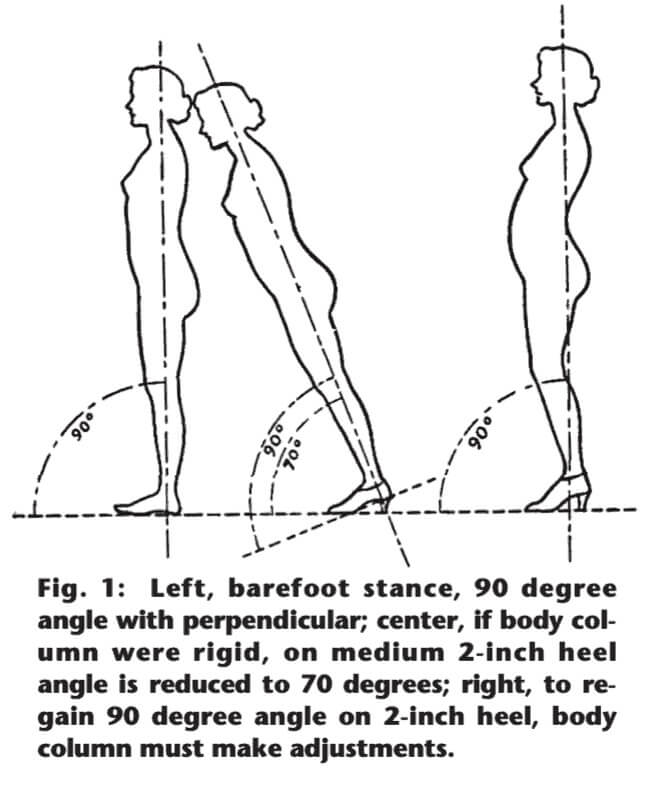
Suppose we can agree that walking or running barefoot is optimal for the health of your feet. In that case, we can also agree that any footwear that prevents your feet from remaining in their natural position, or that causes changes in your posture, is not optimal.
Unfortunately, that’s exactly what most modern shoes do.
For example, most regular shoes have a fairly narrow toe box that pushes your outer toes inwards, causing foot pain and leading to problems like hammer toes and bunions. Less toe spread also negatively impacts your ability to balance, and changes your weight distribution.
Additionally, many modern shoes (e.g., traditional running shoes) have a thick, cushioning sole that elevates the heel above the balls of your feet. The image above illustrates what a two-inch heel raise can do to your spinal alignment.
In other words, shoes with soles that elevate your heels force your body to compensate for the unnatural angle, which can lead to lower back pain and other joint issues. Chronically-raised heels can also shorten your Achilles tendons, increasing your risk of injury and reducing your range of motion.
Plus, thick soles eliminate any tactile feedback your brain receives from the ground, which can negatively impact your posture and weight distribution.
If you’re a runner, you probably know that thick, cushioning soles make it more likely to heel strike rather than forefoot strike. Heel striking is tough on joints, including the knees and lower back, and it changes your stride.
For all these reasons, I’ve almost entirely stopped wearing regular shoes. Instead, I wear minimalist shoes almost exclusively — even for CrossFit workouts, running and heavy lifting.
Health Benefits of Barefoot Shoes
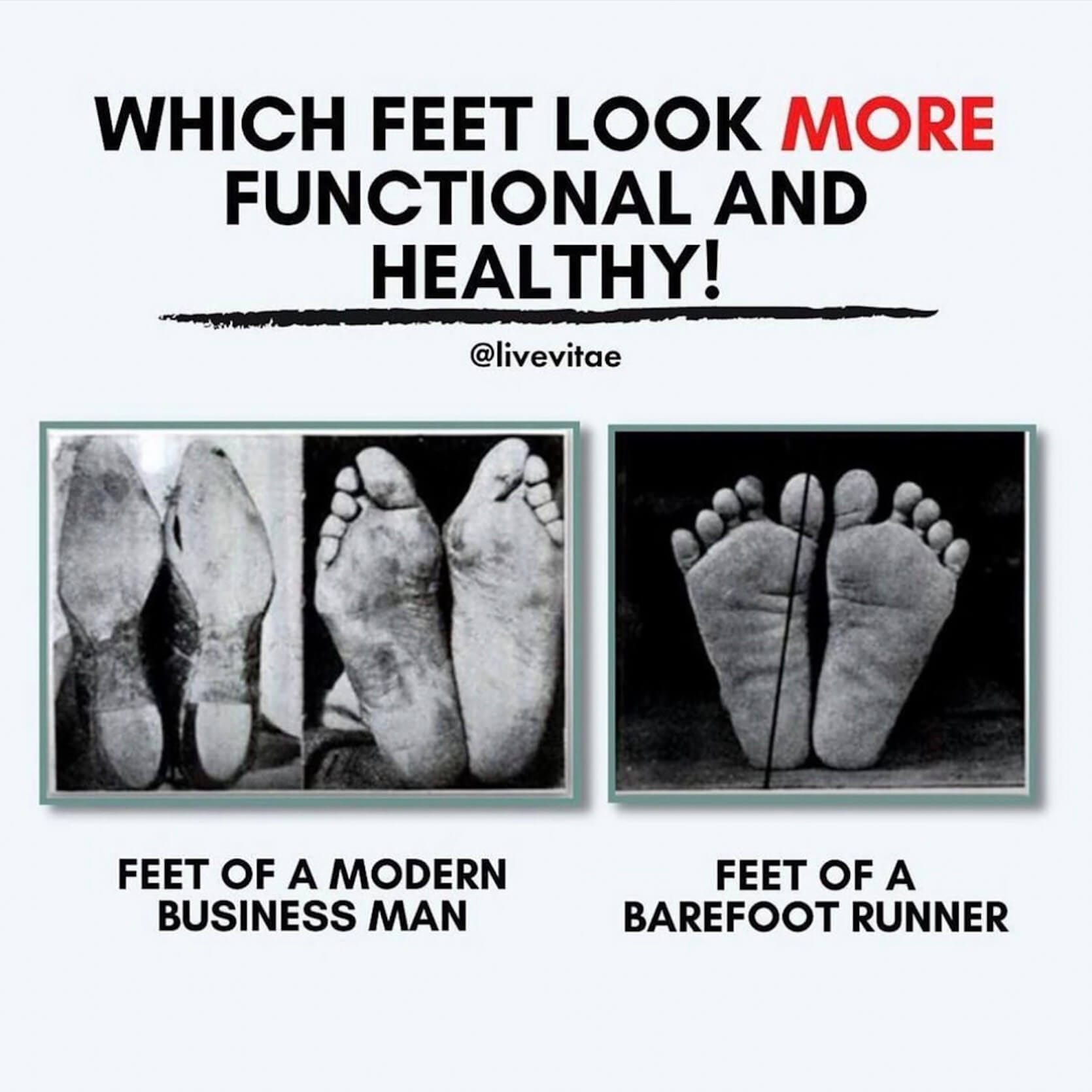
Barefoot shoes aim to mitigate the issues associated with modern footwear by using a thin and flat sole that keeps your toes level with your heels without impeding tactile feedback from the ground. They also feature a wide toe box (or individual compartments) for each toe. The combination of these features enables your feet and lower back to stay in a natural position while standing, walking or running.
Some of the specific benefits of wearing barefoot shoes include:
- Supports natural toe spacing to prevent bunions and hammer toes.
- Supports better posture (which reduces the risk of lower back pain and joint issues).
- Promotes forefoot striking (as opposed to heel striking), which improves stride and lowers the risk of injury.
- Enables sensory feedback to allow for immediate adjustments in foot placement, stride and balance.
- Strengthens foot muscles, improves overall foot function, and reduces the risk of common issues such as flat feet, plantar fasciitis and stress fractures (and thus the need for supportive shoes and orthotics).
Here’s a brief explanation of each of these benefits.
Supports Natural Toe Spacing
Proper toe spacing is an important but often overlooked aspect of foot health. Studies have shown that ill-fitting shoes can contribute to conditions like bunions, hammertoes and plantar fasciitis.
When toes are squeezed together, it can disrupt the foot’s natural alignment, which in turn may lead to joint stress and ligament strain. Footwear that allows for natural toe splay can distribute the body’s weight more evenly across the foot, reducing the risk of concentrated pressure points and subsequent foot problems.
One of the functional benefits of proper toe spacing is improved balance and stability. According to the American Podiatric Medical Association, a properly aligned foot with adequate toe spacing aids in balance and gait, essential elements of mobility. Similarly, narrow shoes can impede the foot’s ability to distribute weight evenly, leading to issues in balance and an increased risk of falls, particularly in older adults.
By allowing the toes to spread naturally, stress on the joints and ligaments is minimized, thereby decreasing the risk of foot deformities and injuries. It’s an investment in foot health that aligns with the biomechanical needs of our feet, as supported by clinical research.
Supports Better Posture
Footwear plays a crucial role in posture, a fact supported by various scientific studies including research published in the Journal of Foot and Ankle Research.
Barefoot shoes, characterized by their minimalist design, aim to mimic the natural shape and mechanics of the foot. These shoes may provide benefits in fostering better postural alignment by allowing the feet to maintain their natural shape and function, thereby affecting the posture of the entire body.
One of the notable features of barefoot shoes is the zero-drop from heel to toe. Traditional shoes — and particularly those with elevated heels or excessive cushioning — can alter the body’s alignment by tilting it forward. According to a 2007 biomechanical study by Guo et al., titled “The Effect of Footwear on Lumbar Lordosis,” such changes in foot positioning can lead to compensatory behaviors like slouching or pelvic tilting, which over time may contribute to poor posture and back pain.
In contrast, barefoot shoes support a more neutral alignment, reducing compensatory posture adjustments.
Promotes Forefoot Striking
Barefoot shoes are designed to encourage a more natural gait, which often translates to a forefoot or midfoot strike rather than a heel strike when running or walking. According to a study published in the journal Nature by Daniel E. Lieberman et al., runners who are habitually barefoot tend to land on the forefoot or midfoot.
This is opposed to runners who wear cushioned traditional shoes, who are more likely to exhibit a heel-strike pattern.
The paper argues that forefoot striking can be more biomechanically efficient and might reduce the risk of repetitive stress injuries.
The emphasis on forefoot striking is significant for several reasons. Research has suggested that landing on the forefoot when running distributes impact forces more evenly and could lead to fewer injuries. Heel striking — which is often promoted by the elevated and cushioned heels of modern running shoes — generates a sudden, large impact transient (a force that the body has to absorb with each step).
In contrast, forefoot striking eliminates this impact transient, potentially reducing the overall stress on the lower extremities during movement.
Enables Sensory Feedback
Barefoot shoes are designed to provide a more natural walking or running experience by minimizing the material between the foot and the ground. One of the key benefits of this design is enhanced sensory feedback, also known as proprioception. According to research published in the Journal of Foot and Ankle Research, barefoot or minimalist footwear can improve the foot’s ability to sense the ground, providing valuable information to the body about the walking or running surface.
Enhanced sensory feedback can be beneficial for several reasons.
First, increased ground sensation allows for immediate adjustments in foot placement, stride and balance. These subtle changes can contribute to a more stable gait and potentially reduce the risk of falls and injuries, according to a study published in the journal Gait & Posture.
Second, better sensory feedback may also lead to improvements in neuromuscular coordination, as the body becomes more attuned to the nuances of different surfaces and terrains.
Strengthens Foot Muscles
Barefoot shoes are designed to mimic the natural mechanics of the foot, leading to increased activation of foot muscles. According to a study published in the Journal of Foot and Ankle Research, wearing minimalist or barefoot shoes engages the intrinsic muscles of the feet more than conventional shoes do.
This increased muscle activation may contribute to improved foot strength and stability, which are essential for both static postures and dynamic movements.
If you exercise a lot, barefoot shoes can reduce your risk of injury that stems from improper posture when using traditional trainers. They can also help you improve your recovery.
However, it’s essential to approach the transition to barefoot shoes cautiously. Research suggests that transitioning too quickly to minimalist footwear can temporarily increase foot bone marrow edema, a sign of bone stress.
This underscores the importance of gradually adapting to barefoot or minimalist shoes, allowing the foot muscles time to strengthen and adapt to the new biomechanical environment.
In my case, I had already been walking barefoot for a number of months prior to switching to minimalist shoes.
What to Look For When Buying Barefoot or Minimalist Shoes
It’s great to see how much the minimalist and barefoot shoe market has grown over the past few years. As a result, there are many barefoot shoe styles to choose from (this article lists my favorites). However, to get the most benefits out of your barefoot shoes, here are some things to consider before making a purchase.
Are They Completely Flat?
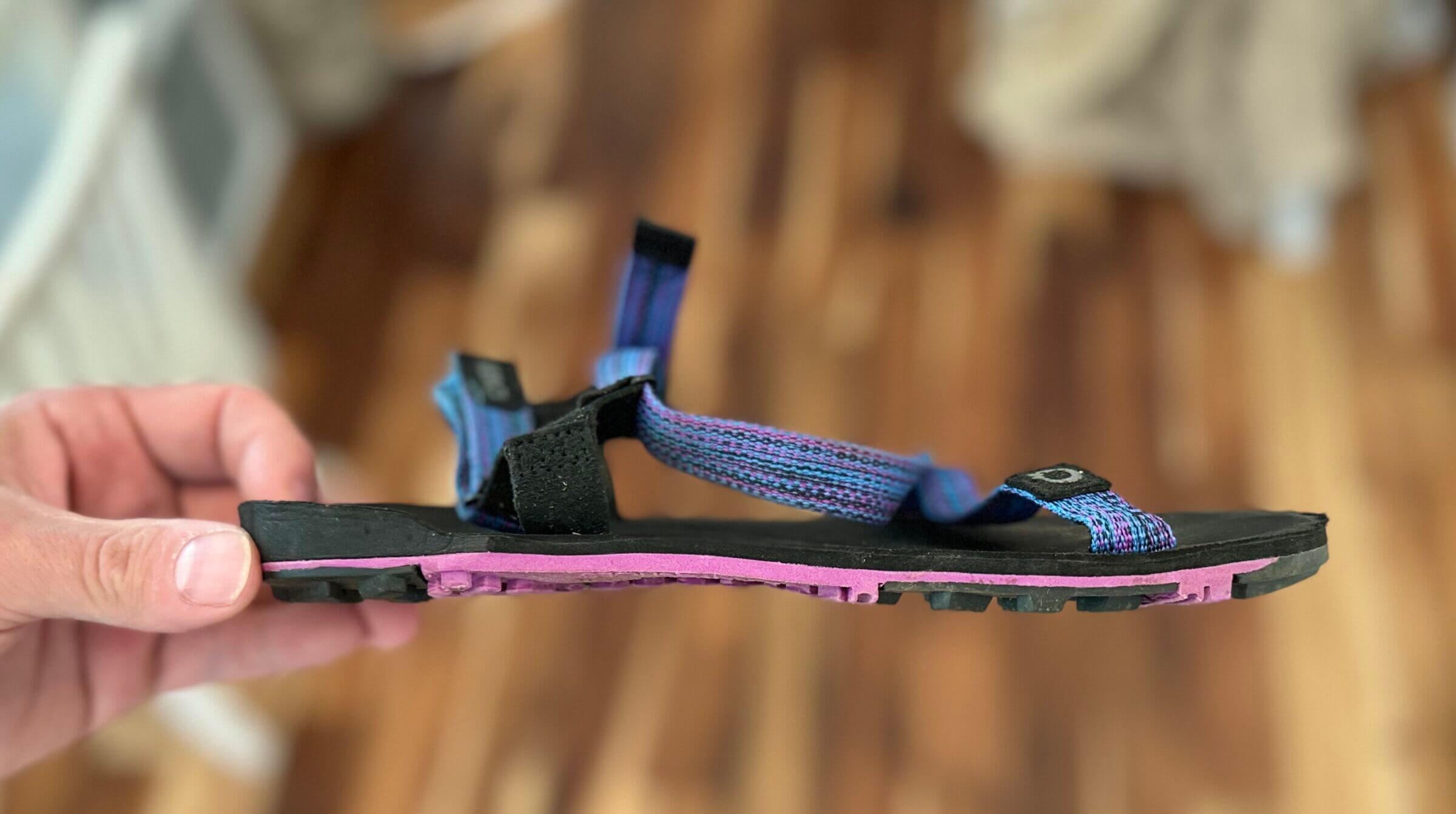
Barefoot shoes should be completely flat (zero drop) to keep the center of gravity over your heels. Elevated heels force you out of balance, and force your body to compensate for that lack of balance, leading to joint and lower back issues.
Do They Fit Properly?
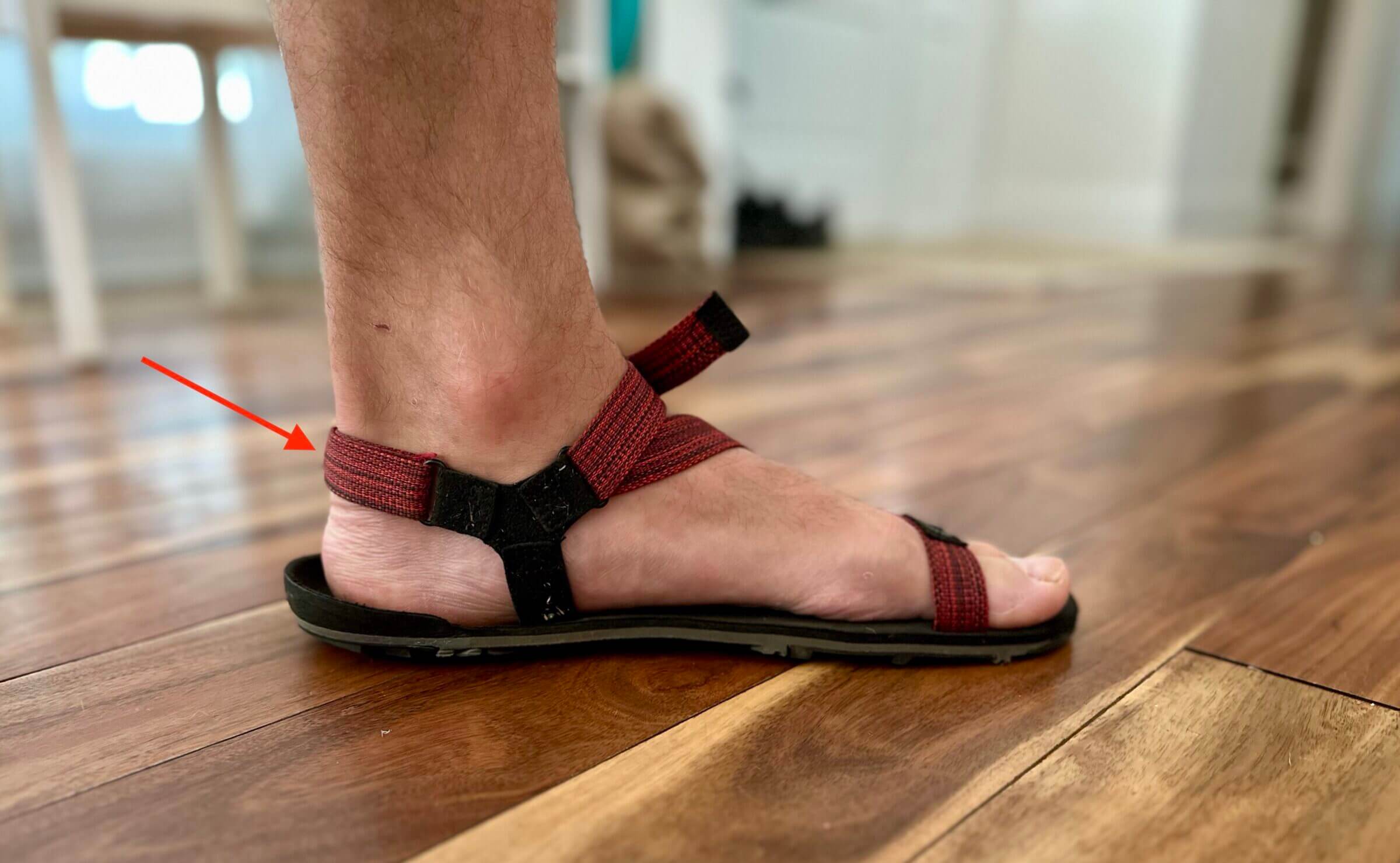
Use shoes that fit well so that your feet don’t flop around. That’s why I’m not a fan of flip-flops and similar shoe designs that prevent the shoe from constantly touching your foot.
The problem is when your heel loses contact with the shoe, your toes will naturally try to compensate by “gripping” your sole to hold on to it. That unnaturally changes your foot mechanics.
Minimalist sneakers or trainers usually don’t have that issue, but if you’re shopping for minimalist sandals, make sure they have a strap on the back to keep your heel in contact with the sole.
Most minimalist shoes are reasonably soft and flexible and fit more like socks than traditional shoes, with thick soles and side walls that might cause pressure points if you don’t leave enough room. As far as the width of the toe box is concerned, make sure you have enough room for your toes to spread naturally but not so much that your forefoot can shift from side to side.
Do They Have a Flexible Sole?
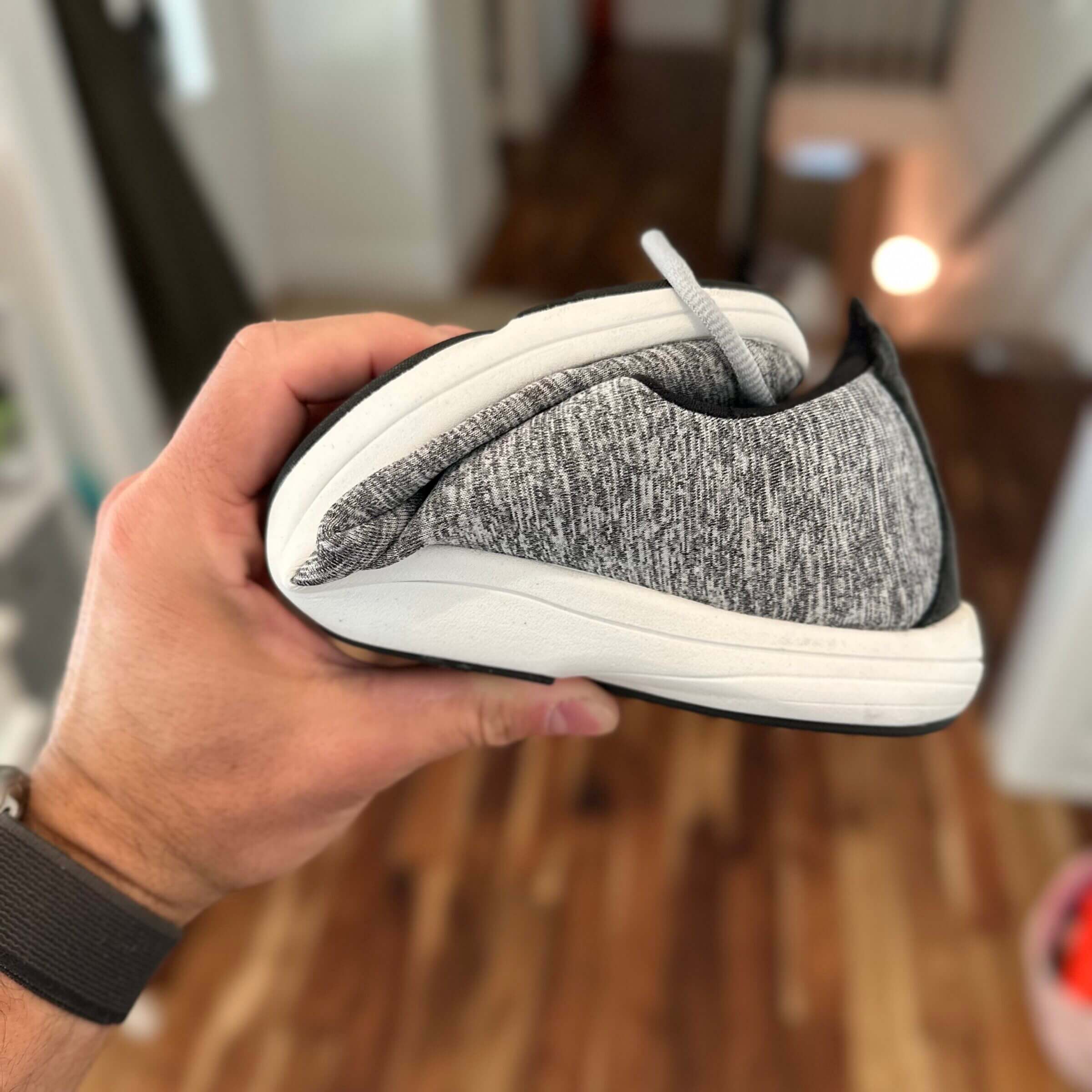
Make sure the shoes you choose have a flexible sole. (They should be so flexible that you can roll them up and twist them.) A sole that doesn’t hinder your feet’s flexibility allows your foot muscles to get stronger over time. In contrast, stiff soles can weaken your foot muscles, leading to pain and a limited range of motion.
Do They Have a Thin Sole?
Barefoot shoes should have a sole that is thin enough to provide sensory input and proper contact with the ground you’re walking on. If you don’t feel the texture of the ground you’re walking on, it’s more difficult to maintain a proper stride, balance and weight distribution.
The question is, how thin should the sole be? I’d argue that the thinner, the better, because it gets you closer to a true barefoot experience. However, super thin soles aren’t always practical, depending on where and for how long you intend to wear your shoes.
That’s why I recommend choosing shoes with soles that are thin enough to provide tactile input, but are thick enough so you can wear them all day. A sole thickness of 9 millimeters appears to be the sweet spot for many people, because it offers enough tactile feedback and comfort at the same time.
Are They Foot-Shaped?
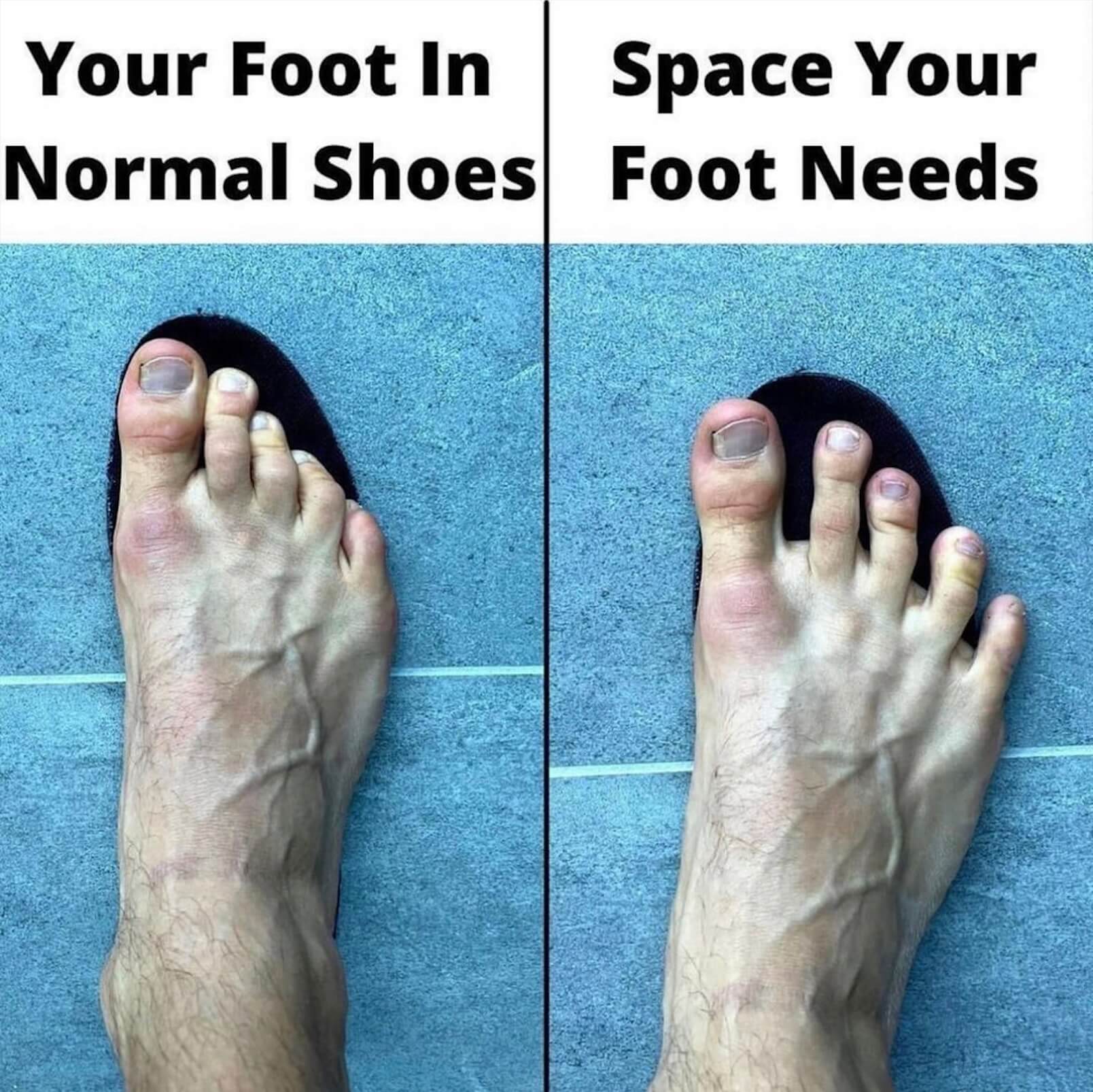
Barefoot shoes should follow the natural shape of your foot. In contrast, most modern shoes have a pointy or arrow-shaped toe box.
Do They Have Sufficient Toe Space?
When it comes to toe spacing, there are two types of minimalist shoes on the market: those with a traditional (but wide) toe box, and finger or toe shoes that look like gloves for your feet and offer an individual compartment for each toe.
I think wide-box shoes are great for anyone with proper toe spacing. In other words, if modern shoes haven’t deformed your toes, wide-box shoes help you maintain proper toe spacing. We purchased wide-box shoes from Xero for our kids because their feet are still relatively healthy.
Wide box shoes are also suitable for specific social occasions where toe or finger shoes might draw funny looks. However, I should mention that Peluva, the brand I purchase my shoes from, offers toe shoes that look perfectly acceptable for any occasion.
For most adults, I recommend getting toe shoes that actively help maintain proper toe spacing.
Do They Have Unnecessary Arch Support?
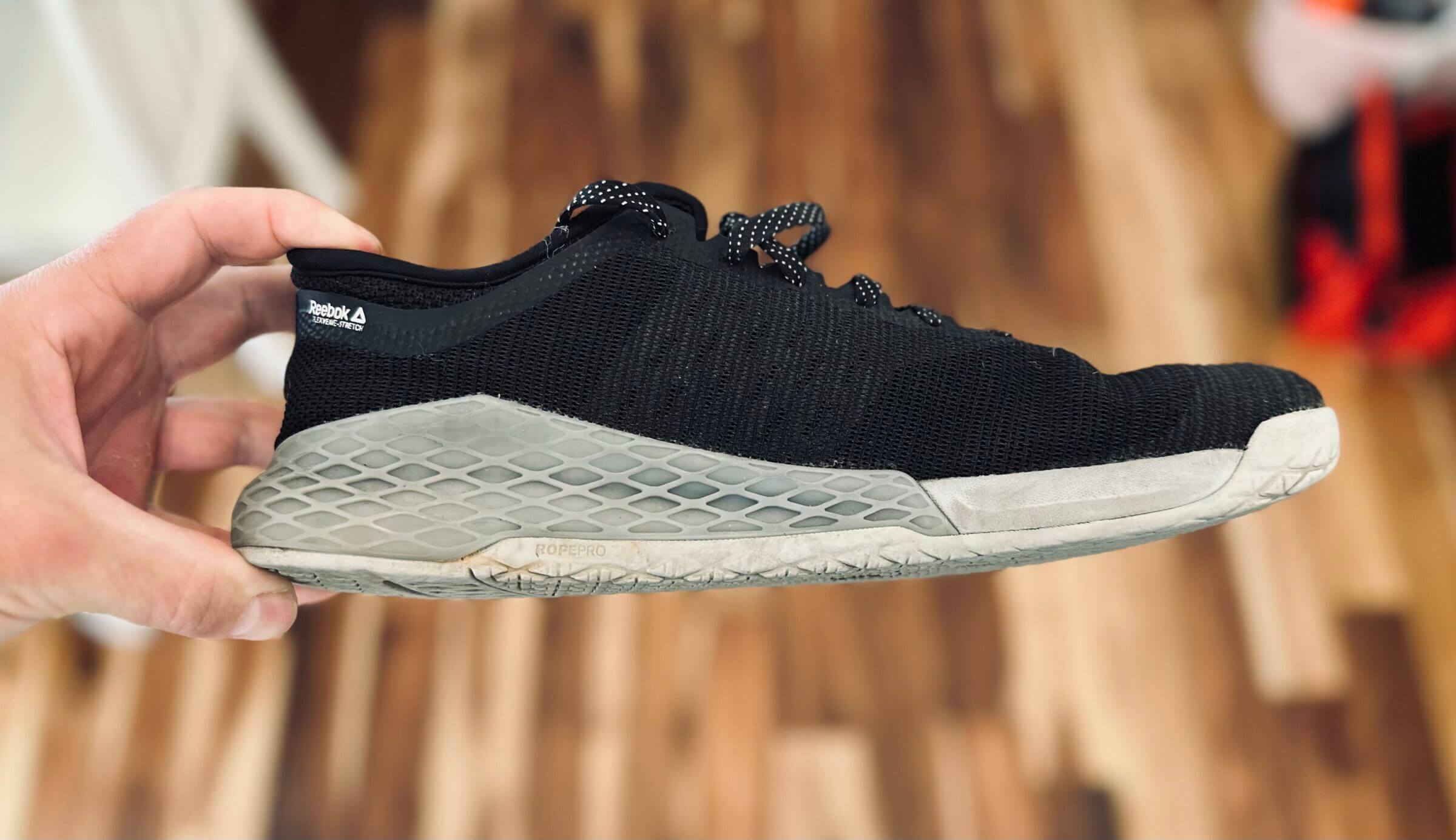
Flat feet are usually a sign of weak foot muscles, and adding arch support via shoes or insoles doesn’t help your foot muscles become stronger. Quite the opposite is the case. That’s why avoiding shoes with arch support is vital if you want to allow your foot muscles to become stronger over time.
Why Peluva Is My Favorite Minimalist Shoe Brand
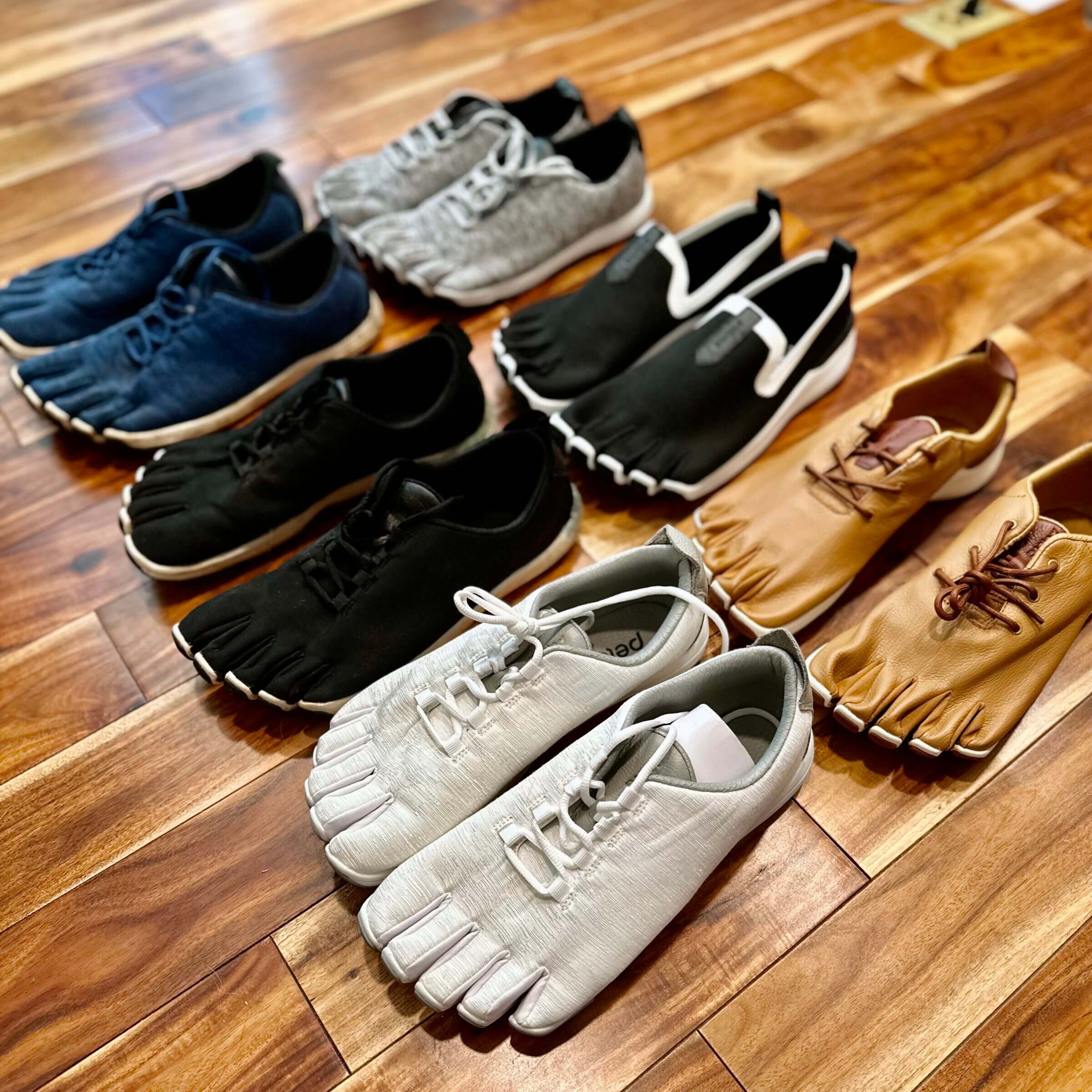
I own several zero-drop shoes from brands including Vibram and Xero Shoes, and I like them all. However, Peluvas are what I wear daily for running errands, walking the dog and even during CrossFit workouts (which often include a combination of weightlifting, jumping, running and rope climbing).
I like Peluvas so much because they combine all the benefits of traditional toe shoes with socially-acceptable styles. In other words, I can wear them for pretty much any occasion and with various outfits. Most toe shoes look nerdy, and my wife wouldn’t let me wear them when I’m out with her.
The pair of wide box shoes from Xero Shoes I own look great (like regular sneakers) but don’t provide the same toe separation as my Peluvas.
You can learn more about the brand in my in-depth Peluva shoes review.
Wrap-Up: Why You Should Consider Barefoot Shoes
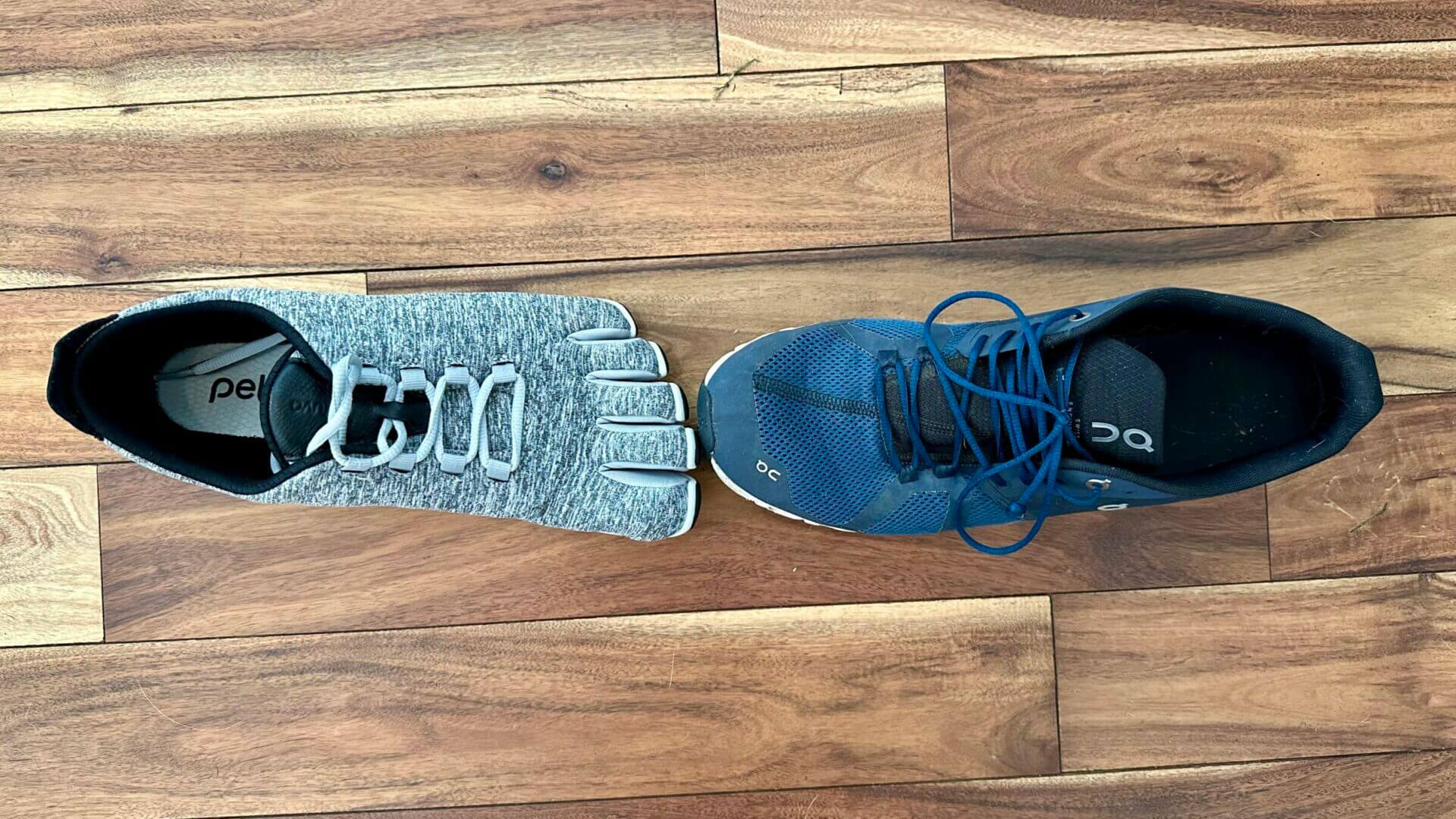
If your feet aren’t healthy, the health of your whole body will eventually suffer. That’s why caring for your feet and using footwear conducive to optimal foot health is so important. Unfortunately, humans tend to invent stuff that is counter-productive to our well-being.
For example, we invented shoes to protect our feet from the elements and sharp objects that could injure us. Along the way, the design of shoes became more important than their function, leading to the creation of footwear that is 100% counter-productive for maintaining optimal foot health. As a result, many people suffer from deformed feet, joint and back pain, bad posture and other maladies.
My wife and I wish we had discovered the benefits of wearing barefoot shoes long ago, but the good news is that it’s never too late. In fact, after only a few weeks of wearing our Peluva barefoot shoes, we both noticed improvements in the structure of our toes and the strengthening of our foot muscles.
Regular shoes, including the workout shoes we used to wear, now feel tight and uncomfortable.
So I encourage you to take a good look at your feet and assess whether or not they look how healthy feet should look. Unless you’re already a barefoot proponent, I suspect the answer is no. In that case, go ahead and invest in a good pair of toe shoes and start improving the health of your entire body, including your feet. If you’re not ready for toe shoes, a pair of wide box shoes or barefoot sandals is your next best bet.

Michael Kummer is a healthy living enthusiast and CrossFit athlete whose goal is to help people achieve optimal health by bridging the gap between ancestral living and the demands of modern society.
Medical Disclaimer
The information shared on this blog is for educational purposes only, is not a substitute for the advice of medical doctors or registered dieticians (which we are not) and should not be used to prevent, diagnose, or treat any condition. Consult with a physician before starting a fitness regimen, adding supplements to your diet, or making other changes that may affect your medications, treatment plan or overall health. MichaelKummer.com and its owner MK Media Group, LLC are not liable for how you use and implement the information shared here, which is based on the opinions of the authors formed after engaging in personal use and research. We recommend products, services, or programs and are sometimes compensated for doing so as affiliates. Please read our Terms and Conditions for further information, including our privacy policy.
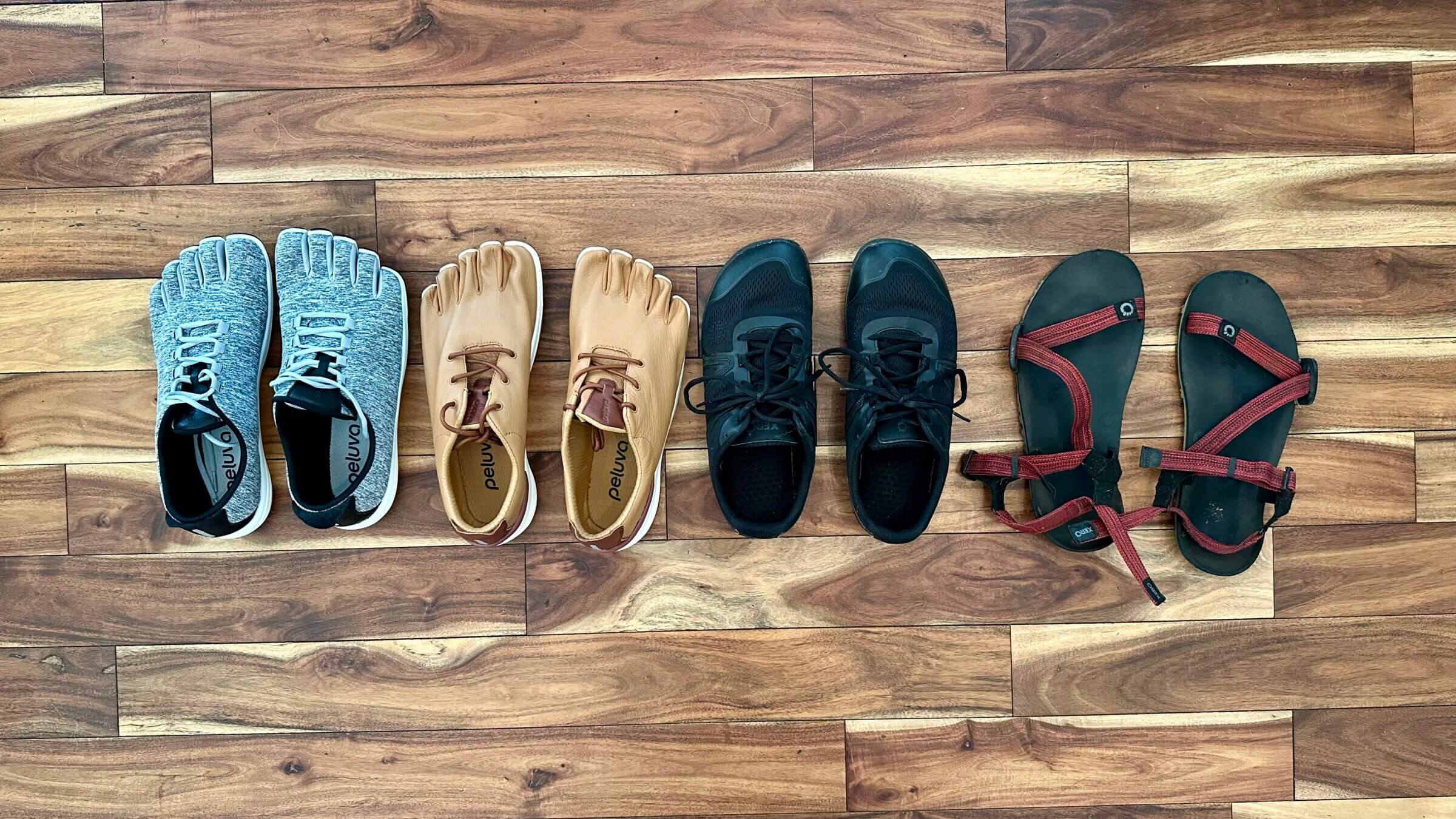
I ordered Hike barefoot shoes and they did not work for me. maybe I ordered the wrong size or maybe the wrong style. I tried to return them. you can NOT return Hike shoes unless you want to ship them to China on your dime. the website is completely misleading. I would not recommend them at all.
Hey Susan,
I’m sorry to hear about your issues and appreciate your sharing your experience with Hike so that others are aware.
Cheers,
Michael
Thank you for emphasizing the significance of foot health in our overall well-being.
You got it, thanks for visiting my blog!